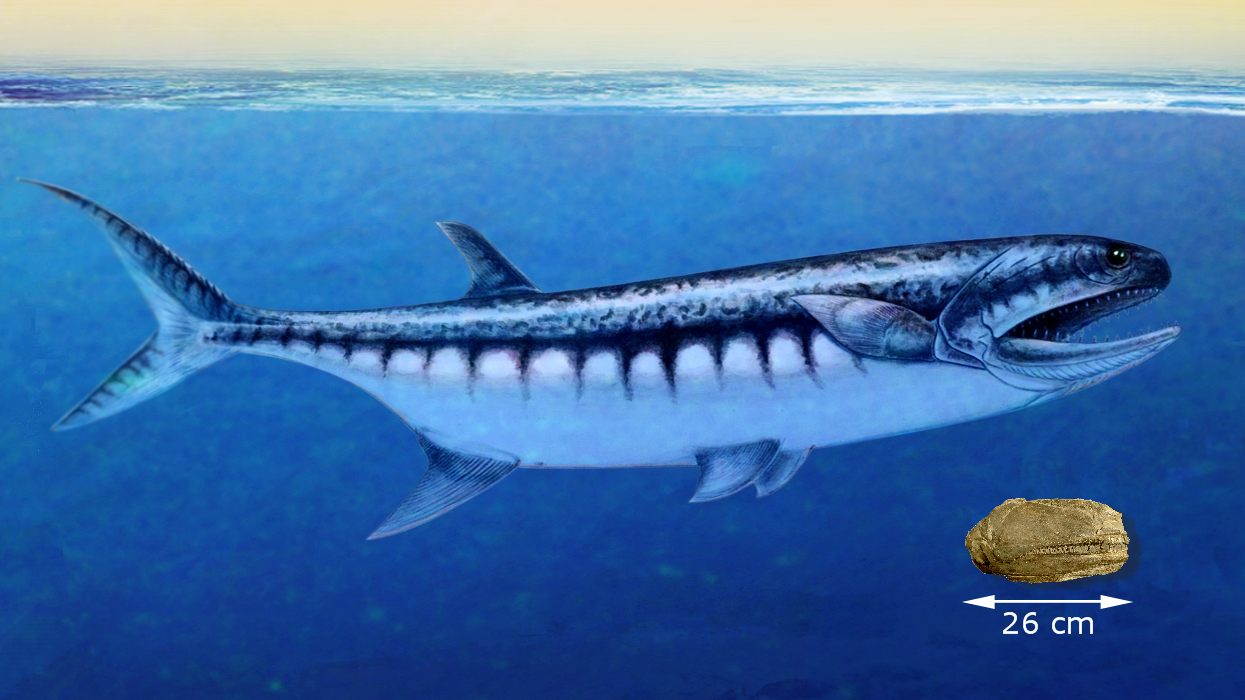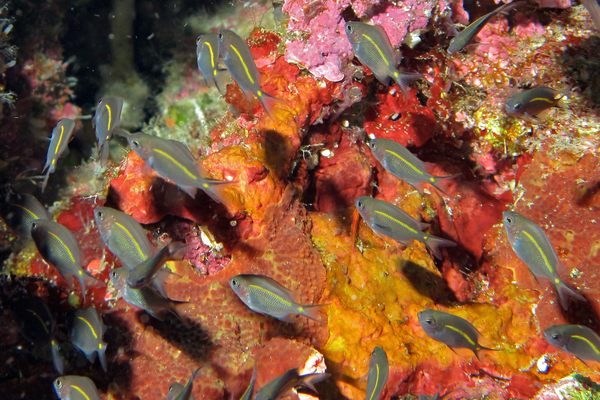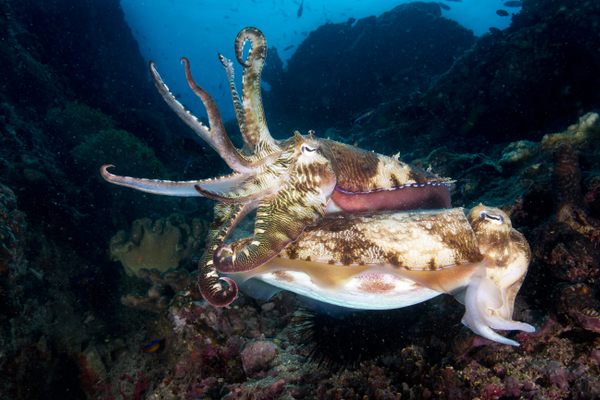Just After a Mass Extinction, This Toothy Fish Ruled the Seas
A new fossil shows it topped the food chain earlier than was once thought.

Northeastern Nevada may be dry and covered in sagebrush today, but 252 million years ago it was under a shallow equatorial sea beside the supercontinent of Pangea. It was also home to one of the top predators of the early Triassic, a large-mouthed fish known as Birgeria americana. Part of a B. americana skull was recently discovered in Elko County, Nevada, by a team of Swiss and American paleontologists. Such a well-preserved Triassic vertebrate fossil is a rare find in the United States.
The mass extinction that marked the end of the Permian and the beginning of the Triassic was the largest extinction event in the history of our planet—about 90 percent of Earth’s species disappeared, including up to 95 percent of marine species. Unlike the mass extinction that did in the dinosaurs, the Permian-Triassic extinction wasn’t caused by an asteroid, but rather acid rain created by volcanic gases. Just one million years after those destructive downpours, the six-foot-long B. americana was the undisputed king of the local food chain.

This trophic dominance is surprising, because until now, scientists thought predators like B. americana didn’t show up until about five million years later. But it’s no wonder it was the top fish. Scientists believe it hunted by chasing down and biting its meals with three rows of sharp teeth—the great white shark of its time.




















Follow us on Twitter to get the latest on the world's hidden wonders.
Like us on Facebook to get the latest on the world's hidden wonders.
Follow us on Twitter Like us on Facebook